September 29, 2016
What the Salmon Say: Artists in the Classroom

Today's guest blogger is Angela Andersen, Visual Art Teacher and Department Head of Fine Arts at Queen Margaret's School in Duncan, BC. During the 2015-16 school year, they took on a large-scale creative project called What the Salmon Say, supported by an Artists in the Classroom grant. Read on to learn more about this wonderful that brought together young artists and the community — and discover how YOU can bring the arts into the lives of young people.
Forty-five young artists from Queen Margaret's School and 13 adult artists from the community of Duncan combined forces to create a public mural that promotes understanding of local ecosystems from a First Nations perspective, while beautifying a main corridor in the City of Duncan. This large-scale project required the support of many community members and serves as a visual reminder to respect and honour our relationship with nature and each other.
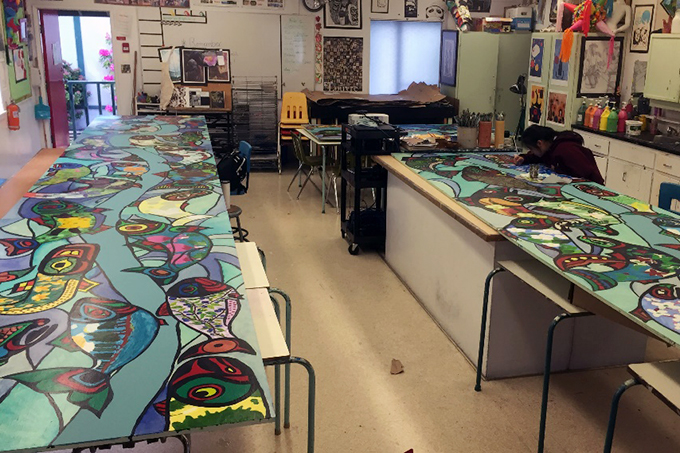
Children's motivation to learn and communicate their passion for our natural environment is supported when they have the opportunity to make a visible contribution in the community. The building owner, the Duncan Business Improvement Association and the City Council of Duncan have given the students of Queen Margaret's School a goal to work for, something to be accountable for. Not surprisingly, they joyfully rose to the challenge.
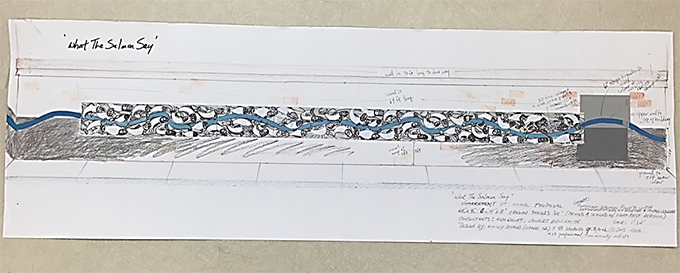
This 64' x 4' mural includes renderings of salmon styled after traditional Pacific Northwest Coast art. In collaboration with her teacher, Grade 12 student Emily Zhang studied the formline style and consulted with local carver Lambert Goldsmith to establish the overall composition. Before the project was sent to City Council she presented her scaled drawings to the building owner, the Duncan Business Improvement Association and an art review panel who facilitated the inclusion of Cowichan Valley Arts Council community artists. The city's public works department took great care and pride in the installation. An Artists in the Classroom grant, Queen Margaret's School and the DBIA provided the funding. A project of this scale and location doesn't happen without the support of many people and the students were grateful and proud to be given this responsibility.


In addition to working one-on-one with Emily, Lambert Goldsmith shared his work and his knowledge of traditional design elements with all of the students working on the mural during several classroom visits and workshops. Mr Goldsmith was open, kind, knowledgeable and didn't hesitate to encourage the students to seek a balance between traditional approaches and artistic interpretation. Through his actions and from the feedback of several members of the Cowichan Tribes, the phrase Nutsamaat Skwalawun—which means, one heart, one mind—was demonstrated in openness and sharing of knowledge. The artists involved "own" their fish; they respected the traditions of others while investing something of themselves.
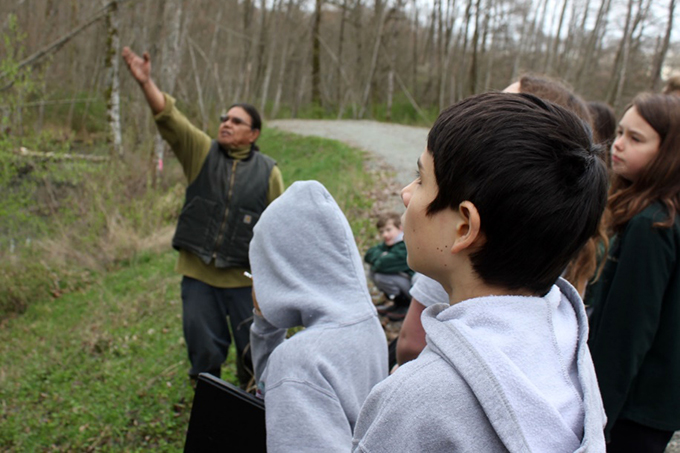
Ken Elliot, a local First Nations ethno-botanist shared his extensive knowledge of Indigenous plants and their traditional uses, salmon habitat and life cycle during a river walk at the Cowichan River Hatchery. The students took notes and photos and listened with interest to Mr Elliot as he moved from stories of his ancestors to facts about the salmon life cycle. His anecdotes put a human face to the data gathered from various textbook and online sources. After the stories were shared and facts gathered, students selected their plant and began the process of designing to best represent their plant within the body of their salmon.
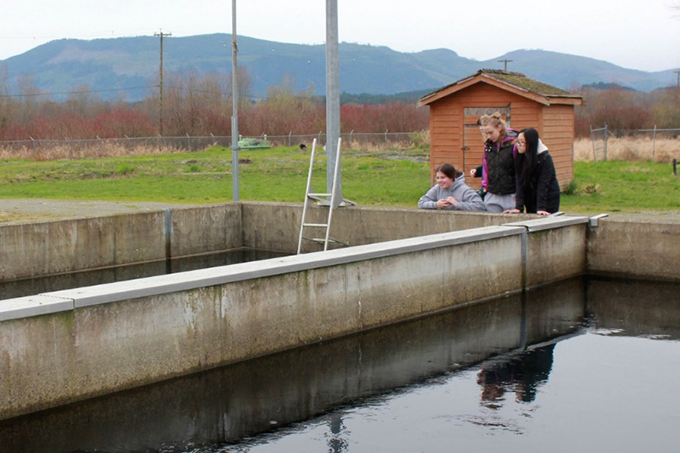
With a repeat of the 2015 drought-like conditions expected for this summer, the future of the Cowichan River is of great concern to Cowichan Valley residents, including the kids who swim, tube and fish at the river. The Outdoor Recreation Council named the Cowichan River on BC's most endangered rivers list for 2016: "The most endangered waterway on Vancouver Island is the Cowichan. This has a serious impact on the health of the rivers ecosystem and its salmon and trout stocks."

The kids learned about habitat restoration by watching videos produced by local and provincial groups working to protect the Cowichan River and throughout the province. Our biology teacher, Ms Nicole Lorusso continued the discussions started by Ken Elliot in her biology classes. She asked her students to create the riparian plant reference cards used for the project. These included images, key visual identifiers and traditional uses and will be a valuable classroom resource in the biology lab.
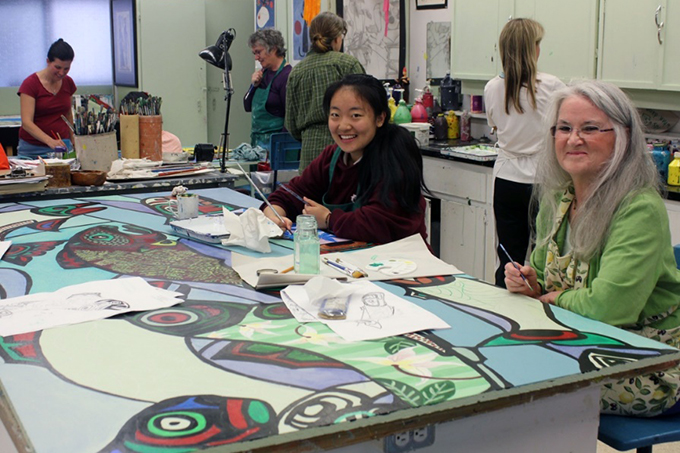
Many students sought out their selected plants on campus and in their backyards. They were passionate about learning in part due to their role as informing others of the importance of respecting riparian land and waterways. Students aspire to make a difference in the world and art is a natural way to learn about, celebrate and share their commitment to protecting biodiversity along the Cowichan River.

Public art projects such as this are a perfect vehicle to communicate values, share knowledge and bring a diverse group of people together in a shared purpose. We nurture our young people and our natural surroundings by contributing to civic projects that benefit all. Like the salmon depicted in the mural, heading downstream to the ocean, the teachings, relationships formed and experiences gained here will spread around the globe in the minds and hearts of our young people. What the Salmon Say will stay with us for many years to come.
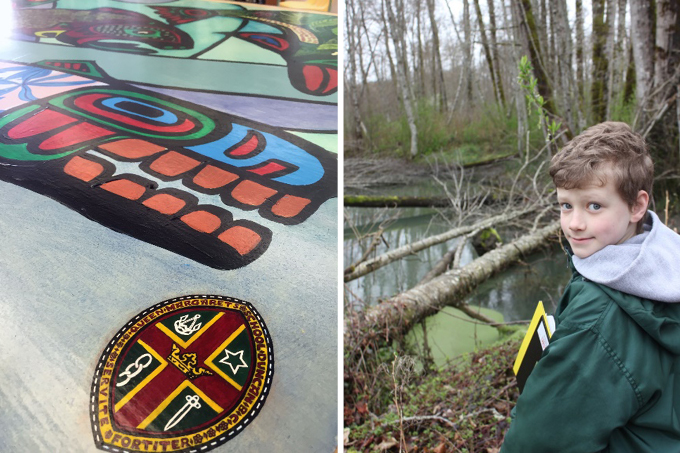
Feeling inspired?
Here are 3 ways you can activate creative learning for young people...
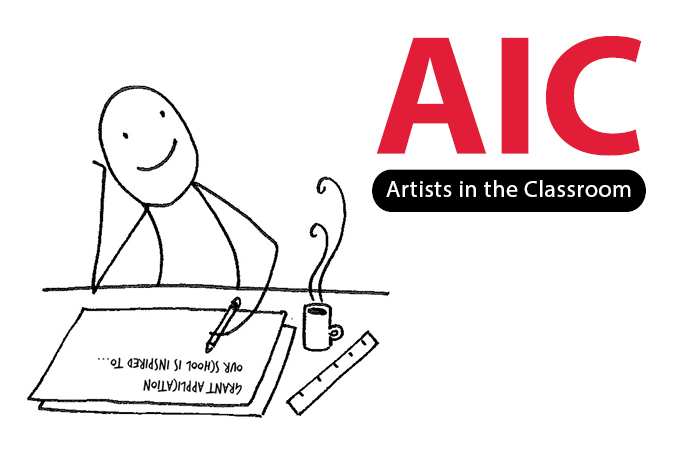
1. Teachers and Artists — Apply for Artists in the Classroom grants!
The project you just read about was supported by an Artists in the Classroom grant disbursed by ArtStarts in Schools and funded by BC Arts Council and the Province of BC.
Artists in the Classroom Grants bring professional artists into your classroom for unique learning experiences. Grants of up to $3,500 for small- to medium-scale projects or up to $10,000 for large-scale projects are available.
The next deadline to apply is October 17, 2016. Learn more and apply now at artstarts.com/aic

2. Teachers — Register for the upcoming Pro-D day at ArtStarts!
Stand Out! Putting Learning on the Centre Stage through the Performing Arts is a full-day professional learning experience for BC teachers on Friday, October 21, 2016 at the ArtStarts Gallery in Vancouver. This event will engage your creativity while exploring arts integration as an approach to teaching.
Take part in two hands-on, skills-based workshops in the arts that aim to nurture your creative confidence: Page and Stage with spoken word poet Dia Davina and Physical Theatre in the Classroom with theatre artist Susan Bertoia. The workshops will be followed by a plenary conversation, facilitated by educator Leanne Ewen, on how we can immediately put these newly learned art skills into action in the classroom.
Early bird rates are available until September 30, 2016. Learn more and register now at artstarts.com/infusion
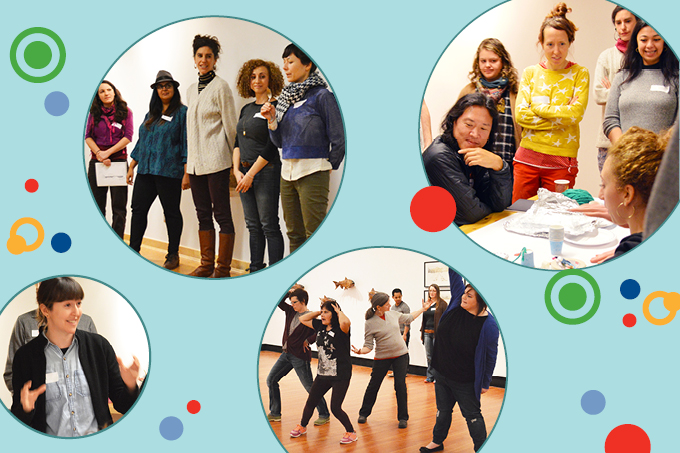
3. Artists — Take part in the upcoming Arts Integration Learning Lab!
November 14 to 18, 2016, this 5-day professional development experience for artists of all disciplines is designed to build their capacity and position them to work alongside educators in schools. The cost for artists selected to participate in the Arts Integration Learning Lab will be subsidized and covers tuition, program materials and lunch. A subsidy for accommodation is also available. This opportunity is made possible through funding support from BC Arts Council and the Government of British Columbia's Creative Futures program.
Learn more and apply by September 30, 2016 at http://artstarts.com/infusion
Social Sharing
Past Stories
Search by category
Accessibility | AIC Projects | Arts Integration in Action | ArtStarts Artists | ArtStarts Team | Community Events and Engagement | Exhibitions | Grants | Guest Blog | Infusion Pro-D | Knowledge Philanthropist | Meet a Community Art Star | Showcase | Supporters | The Next 20

